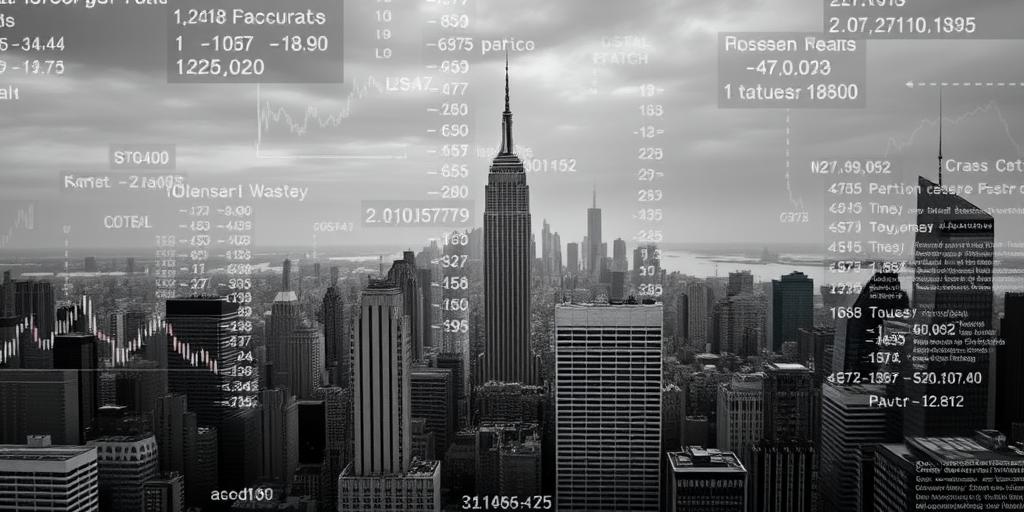The 2008 financial crisis, a period of intense global economic turmoil, wasn't solely a matter of failing balance sheets and flawed financial instruments. At its core, it was a psychological event, fueled by systemic fear and panic that cascaded through markets and institutions. This analysis delves into the psychological underpinnings of the crisis, examining how fear, herd behavior, and cognitive biases contributed to its escalation and devastating consequences.
The Psychology of Fear in Financial Markets
Fear is a primal emotion that significantly impacts decision-making, especially in high-stakes environments like financial markets. During the lead-up to the 2008 crisis, several factors contributed to a growing sense of unease:
- Complexity and Opacity: The increasing complexity of financial products, such as mortgage-backed securities (MBS) and collateralized debt obligations (CDOs), made it difficult for even sophisticated investors to assess risk accurately. This lack of transparency bred uncertainty and distrust.
- Early Warning Signs: As the housing bubble began to deflate, early warning signs like rising foreclosure rates and declining home prices triggered initial anxieties. However, these were often dismissed or downplayed due to a combination of optimism and denial.
- Contagion Effect: As the crisis unfolded, fear became contagious. The failure of one institution sparked concerns about the stability of others, leading to a domino effect of panic selling and credit freezes.
Herd Behavior and the Amplification of Panic
Herd behavior, the tendency for individuals to mimic the actions of a larger group, played a crucial role in amplifying the panic. In the context of the 2008 crisis, this manifested in several ways:
- The Rush to Securitize: The securitization of mortgages became a widespread practice, driven by the belief that it was a safe and profitable way to diversify risk. However, this created a system where the fate of numerous institutions was interconnected.
- The Flight to Liquidity: As fear intensified, investors rushed to sell risky assets and hoard cash. This "flight to liquidity" further depressed asset prices and exacerbated the credit crunch.
- The Echo Chamber Effect: Within the financial industry, a culture of conformity often prevailed. Dissenting voices were marginalized, and groupthink reinforced the belief that the housing market would continue to rise indefinitely.
Cognitive Biases and Decision-Making Failures
Cognitive biases, systematic patterns of deviation from norm or rationality in judgment, also contributed to the miscalculations and flawed decision-making that characterized the crisis:
- Optimism Bias: Many market participants exhibited an unrealistic optimism about the future, underestimating the likelihood of negative events. This led to excessive risk-taking and a failure to adequately prepare for potential downturns.
- Confirmation Bias: Individuals tended to seek out information that confirmed their existing beliefs, while ignoring or downplaying contradictory evidence. This reinforced the prevailing narrative of continued growth and prosperity.
- Availability Heuristic: The availability heuristic is a mental shortcut that relies on immediate examples that come to a given person's mind when evaluating a specific topic, concept, method or decision. During the boom, the readily available examples of successful mortgage-backed securities reinforced their perceived safety.
The Aftermath and Lessons Learned
The 2008 financial crisis serves as a stark reminder of the powerful influence of psychology on economic events. The crisis not only resulted in trillions of dollars in losses, but also had profound social and political consequences. Understanding the psychological factors that contributed to the crisis is essential for preventing similar events in the future.
Moving Forward: Promoting Rationality and Resilience
To mitigate the risk of future crises, it is crucial to:
- Enhance Transparency and Disclosure: Greater transparency in financial markets can reduce uncertainty and prevent the build-up of systemic risk.
- Promote Critical Thinking and Independent Analysis: Encouraging independent analysis and dissenting opinions can help to challenge groupthink and prevent herd behavior.
- Develop Robust Risk Management Frameworks: Risk management frameworks should incorporate behavioral insights to account for the impact of cognitive biases and emotional factors.
By acknowledging the psychological dimensions of financial crises, we can develop more effective strategies for promoting stability and resilience in the global economy. The 2008 crisis was a painful lesson, but one that can inform a more rational and resilient future.









